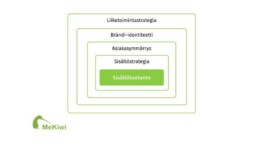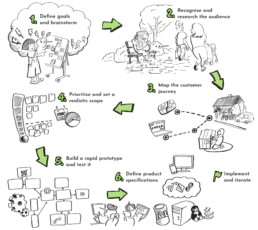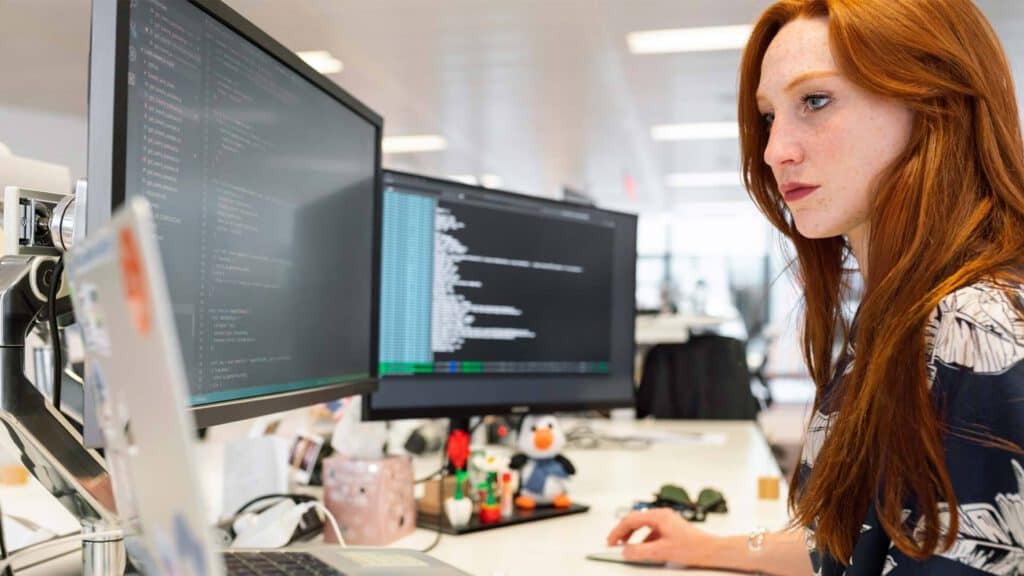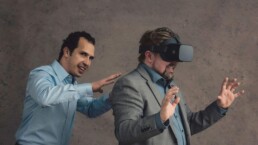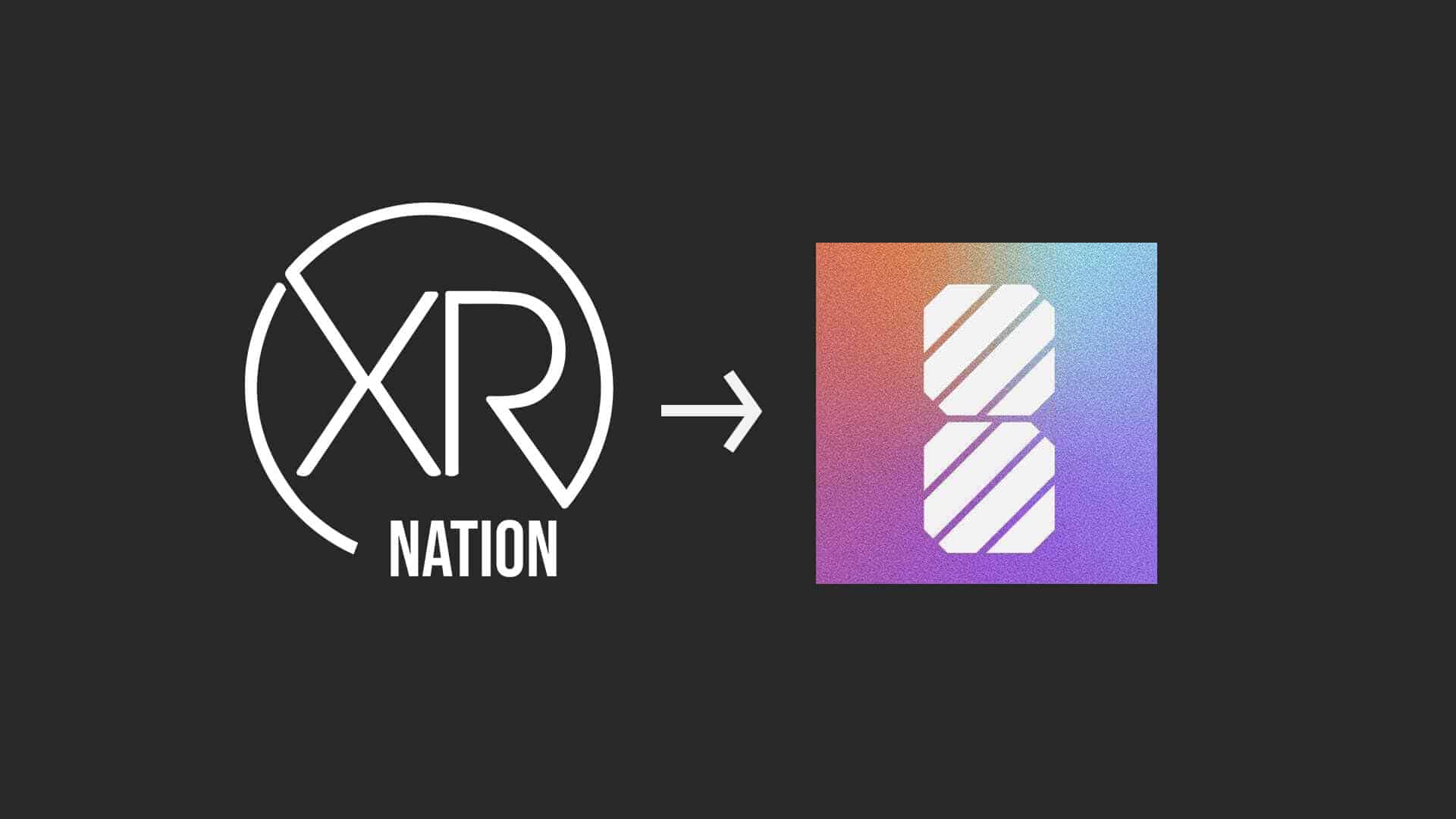Metaverse opens up for business
Game development has brought the virtual world to homes. The digitally native and global Gen Z has grown up with advanced graphics for computer games. Their experience and attitudes set high standards for the virtual user experience.
The Metaverse is the virtual world of the future. It is where people enjoy themselves, buy and work virtually. User simultaneity allows them to interact and communicate with each other in a shared virtual environment.
Metaverse and multisensory experiences
Virtuality creates new kinds of opportunities for business. The Metaverse offers customers a multi-sensory customer experience through virtual, real-time interaction.
Today, virtual reality (VR) in the metaverse is, for example, a commercial VR environment where customers can explore the products and services on offer in 3D showrooms or simulated use cases.
Customers create a virtual character for themselves, which allows them to move and chat with other virtual characters in the same space. The virtual 3D environment and models help the customer to get familiarised with the features of products and services and thus make it easier, for example, to make a purchase decision. A well-designed virtual tour reduces the customer’s product returns and the need for customer service.
VR technologies enabling the metaverse
Virtual applications enable a virtual experience of things, places, and situations that are currently inaccessible.
The goal of a VR application is to create a lifelike, virtual, customer experience, to the extent that it is appropriate. A good example of this is the Simboat VR application developed in collaboration between MeKiwi and XR Marine. The highlights of boating are present virtually, allowing the customer to discover a new boat model even before the ice starts to melt.
The technologies enabling the metaverse are AR (Augmented Reality) and VR (Virtual Reality) and the intermediate form MR (Mixed Reality). They are based on XR (Extended Reality).
In the AR experience, virtual content is connected to the real world with the help of an AR-supported application or browser. A familiar example for many is the Pokémon GO game. In it, the player searches for Pokémon characters that are connected to the real world. Additional information or instructions on a product or service that can be accessed via a QR code is also an AR experience.
In a VR application, the virtual environment is viewed with VR glasses that exclude the outside world. In the environment, you interact with objects manually or with VR controllers. Visuals, sounds, and interactions with the environment create an immersive VR experience.
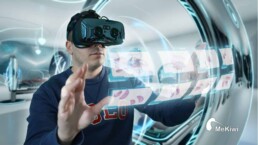
The use of the metaverse is increasing
Hyper-realistic, shared and multi-sensory virtual worlds are on the rise. The most advanced virtual environments are for business and industry. The adoption of Metaverse in the consumer market requires advances in devices, applications, platforms and connectivity.
According to Nashant Batra, Nokia’s Chief Strategy and Technology Officer, the first 5G-Advanced deployments will begin in 2025, when the coverage of the metaverse will increase dramatically. For more detailed technical information, see the guide Metaverse matters: A guide to an immersive future published by Nokia.
The metaverse is implemented by professionals
The aim of the VR experience is to achieve the immersiveness familiar from the gaming world, where the user is immersed in their VR experience. The aim is to create a VR environment in which the operating principles of the real world are reflected. A good example of a VR environment is MeKiwi’s latest VR game, Cave Digger 2: Dig Harder.
A positive user experience is created by skillful technical implementation and smooth service. The best results are achieved by a professionally multi-skilled product development team that includes software developers, graphic designers, UI/UX designers and service designers.
Want to boost your business with virtual reality? As professionals in game development and digital marketing and sales, we can help you make the most of virtual technology.
We will familiarise ourselves with your company’s needs and create an overall picture of the development project for you. We tell you what we do, how we move forward and what we achieve together.
We have been involved in the story of many customers. Check out the references and blogs on our website.
How to improve your website visibility?
You have web pages, but they don’t appear in your browser’s search results. This is a pretty common problem. It is often assumed that the marketing effort has been made once the website has been launched. Websites must be kept alive. They need updating from time to time, e.g. new content and internal and external linking.
How to do SEO?
SEO (Search Engine Optimization) is a process that improves the website visibility in relation to competitors’ ones. Website visibility is affected by the technical functionality of the site, search engine optimized content, company brand awareness, and user personalization. Personalization can be increased, for example, through product suggestions and retargeted advertising to the user of the site. In this blog, we will focus on producing search engine optimized content.

What is search engine optimized content like?
It is worth thinking about what are the strategic customer groups. What kind of customers do you want to market the services to? Who are the potential customers? What kind of needs do they have?
On the other hand, what kind of needs do we have ourselves? What services do we want to provide? What kind of leads do we want to achieve? How are target groups informed about their own values and goals? How would organisations, unions and associations improve the recruitment of new members, for example? Based on these questions, you can already guess what kind of content should be on the website.
In addition to strategy and customer orientation, one of the goals of website design is the visibility of the pages, i.e. search engine optimized content. However, before producing content, you need to find the most common search terms, i.e. keywords.
How to find keywords that work?
Keywords are the very words that customers use to find a solution to their needs. So step into the customer’s shoes yourself and start googling the service you want to find and know about. This allows you to find the best keywords and the most common questions that customers have used when searching for the service.
Customer orientation, natural questions, keywords and linking enhance the findability of the website. Search engine optimised keywords are not just a list of words in the content, they are embedded in the titles and text. The main thing is the clarity and interest of the text from the customer’s point of view.
The most important keyword is the one around which the content is built. Other keywords, on the other hand, support the topic substantially. You can’t fool the search engine, so you shouldn’t overuse keywords. A good ratio is one keyword per 20 words. Services are also often sought with questions. Questions are great keywords. They can be used in content titles. From the keywords you can create the so-called keyword map to help write the rest of the content.
Keywords and content writing
Keyword lists are not yet content, but pages should provide customers with expert and interesting content. It must also be salesy and support the customer’s path to purchase. The website may contain, for example, product information about products, test results and customer quotes about the use of the product. The content of the services includes service descriptions, pictures, maps, customer stories and customer quotes about the service. The sites of organisations etc. provide members with relevant information on their activities.
Whose job, then, is it to produce content? You can entrust content creation to professionals if you don’t have the time and know-how to do so. The professional knows how to write clear, interesting and sales-promoting text. However, you are a service provider and know more about your services than an outsider. Therefore, you should participate in content production as an expert, and provide information and comment on content produced by an outsider.
What is the meta description?
The website is made more interesting by the meta description, i.e. the metatext, which appears as text that describes the content of the web page when the browser’s search results are listed. The aim of the description is to capture your interest and make you want to explore the site in more detail.
The role of meta description is significant, so it is worth investing in it. The description is written in a customer-oriented manner. Let’s think about what a potential customer wants to know and consider the answers to them. The more interesting the description, the more likely it is that the customer will click on the site.
Is your search engine optimization up to date? As digital marketing experts, we can improve the discoverability of your business website.
We get acquainted with the technical implementation of your company’s website and the optimization of services and keywords. We create an overall picture of the development project for you, what we do, how we proceed and what we achieve together.
Read also our previous blog, How do I produce meaningful content?
Want to know more about external links? You can check the MOZ website.
How do I create meaningful content?
Content is always produced for the customer. It needs to reach the right customers and address them in the right way. Business strategy, brand and customer understanding are the cornerstones of content production. They give the content a strategic direction, a way of working and communicating, and create value for the customer. The key to meaningful content production are buyer personas, the purchase paths created for them, timely content and content linking from different channels to websites.
How do I strategically produce the right content?
Content marketing is part of a company’s marketing strategy. In the same way as the marketing strategy and the marketing plan that implements it, the content strategy and content production also follow the business strategy of the company. In this way, the organisation works in harmony towards the goals set.
Strategically, we know, for example, to whom, what, how and where we market and sell. From the perspective of a content strategy, it is meaningful to know what kind of buyer personas we want to reach, engage and serve, and how we manage content in different channels and websites. When content is created around the problems and goals of the buyer persona, sales grow, the brand is strengthened, and our company succeeds.
For the overall brand of the company, it is important that the communication is in line with the brand. The communication of brand identity and value proposition is reflected in all communication, so it should not be forgotten in content production either. The contents consistently reflect the company’s personality, way of working and communicating. Brand should manifest itself in all forms of communication, both visual and spoken content. Consistency of communication increases the credibility of the company in the eyes of the client.

How do I add customer focus to content production?
The better we understand the customer, the easier it is for us to produce content. Customer research provides valuable information for defining buyer personas and the factors that guide a purchase decision. The goal of customer orientation is to create value for the customer with every channel and content. Well-executed content is interesting, informative and motivating for the customer and supports the purchasing process. They also improve the interaction and cooperation between the customer and the company.
The content creator is particularly interested in the customers’ purchasing and service experiences. Purchasing services requires expertise and is often challenging for the customer. Customer satisfaction and efficient and profitable sales are best realised when the customer’s purchase path and the company’s sales path go hand in hand. The client is provided with useful content in a timely manner at different stages of the purchase path.
Customers can be provided with more relevant content that facilitates and speeds up the buying process. For example, a website can create a unique purchase path for each buyer persona. At the beginning of the customer’s purchase path, the task of content production is to support the findability of the website and the intelligibility of the content of the service descriptions. Content linking and search engine optimised content help the customer find the company’s services. The content of the website should provide information and support the customer in the purchase process. Meaningful content entices the customer to progress from one content to another and leads the customer towards a purchase decision.
Is your content creation relevant? At MeKiwi, we use service design to study customer experience and develop the digital purchase path. As digital marketing experts, we can help your company develop content production. We look at your company’s goals and needs. We create an overall picture of the development project for you, what we do, how we proceed and what we achieve together.
MeKiwi funding round closed and new game release in autumn
MeKiwi Oy, one of Finland’s leading developers and publishers of VR games, completed its early-stage funding round in July and is now moving with increased resources towards a new game release, which is planned to be launched on the world’s major gaming platforms in autumn 2022. The investors in the financing round are the Oulu-based Nordic Option Oy and Korpu Siemen Oy, as well as the company’s current shareholders and key personnel.
“As a company, we have a long history of working with VR games and have proven that our expertise allows us to develop and publish commercially successful games worldwide. The completed funding round will result in stronger marketing initiatives with the release of the new Cave Digger 2 game, as well as the overall development of the company in line with its growth objectives,” says Samuel Kuosmanen, CEO of MeKiwi.

“The VR content market is growing at a significant pace, especially for games, and at Nordic Option we believe that MeKiwi’s talented team has the potential to make an international breakthrough. The company’s ambitious growth targets will require the development and commercialisation of several new games in the future. The key task for the current owners is to ensure that sufficient resources are available for the development of new games alongside other strategic measures,” continues Teemu Puumalainen, Investment Director at Nordic Option.
“MeKiwi’s future plans are to increase its game publishing volumes by developing its own games, but also by publishing and marketing other developers’ games. It is also important to develop and manage the distribution channel network to ensure that the games released are accessible to customers on all major and popular platforms. In a few years’ time, MeKiwi will be hopefully a brand that everyone knows”, concludes CEO Kuosmanen.
Additional information:
Samuel Kuosmanen, CEO MeKiwi Oy, , 044-5452020
Teemu Puumalainen, Investment Director Nordic Option Oy, , 040-6318362
Matias Itkonen, Managing Partner SijoittajaPRO Corporate Finance, , 045-6721414
MeKiwi in brief:
Mekiwi is the largest developer and publisher of VR games in Finland. It also offers customised software development and web services to corporate customers. The company was founded in 2014 and its turnover has grown to over €1 million. The company currently employs around 30 people.
Nordic Option in brief:
Nordic Option Oy is a venture capital fund investing primarily in growth companies in Northern Finland. Its largest owners are Arvo Sijoitusosuuskunta, Partnera Oyj, and the City of Oulu. The goal of the company is to offer a nordic option to facilitate the growth and internationalisation of small and medium businesses.
Korpun Siemen in brief:
Korpun Siemen Oy, founded by SijoittajaPRO Corporate Finance, is backed by 33 early-stage investors with extensive experience in start-up, growth and family-owned companies in various industries. The company includes active angel investors, growth company entrepreneurs and investors who have already exited their companies.
Service design and requirements specification in a nutshell
What is service design and what requirements specification project consists of? We briefly summarise together what these two are all about. MeKiwi has also taken part in many service design and requirements specification projects, we can help your company develop a new product or service, or help refine an existing service.
What is service design?
The goal of service design is to create a smooth customer experience by enhancing the quality of a service or product. Service design can be, for example, a clear design of the website's interface or an improvement in the user experience of a product, always with the user in mind. It is a good idea to start designing a service or product with the needs of the end user in mind. Customer understanding and communication between the service provider and the customer is the core of service design. A well-designed service brings added value to the customer, leading to end-user satisfaction. A satisfied customer brings new users, which in turn increases the company's growth.
Requirements specification
The goal of service design is to create a smooth customer experience by enhancing the quality of a service or product. Service design can be, for example, a clear design of the website's interface or an improvement in the user experience of a product, always with the user in mind. It is a good idea to start designing a service or product with the needs of the end user in mind. Customer understanding and communication between the service provider and the customer is the core of service design. A well-designed service brings added value to the customer, leading to end-user satisfaction. A satisfied customer brings new users, which in turn increases the company's growth.
Requirements specification project for Maalausteho Oy
MeKiwi created the service design, UI / UX design and features of the digital service concept, as well as the requirements specification of the technical plan for Maalausteho’s new business idea.
Jonne Riihimäki, CEO of Maalausteho Oy says about our cooperation: “I was really satisfied and things went as I expected. The team and experts on the graphic side as well as the technical requirements specification side were qualified and skilled. The result of the definition was what was expected ”. Read the reference and full customer feedback here.
Your company can also benefit from Business Finland's innovation voucher, for example, for a concept project like this. A ready-made and comprehensive concept also makes it easier to apply for funding to build the final product or service. The application for the innovation voucheris open.
Do you have a new product or project idea or want to hear more about what we can offer? MeKiwi can help you with the concept and service design of your new product or service, contact Jonnaand let's go through your goals and ideas together.
SEO trends 2021
Certain trends can be followed both in clothing and websites, but this time we will focus on websites and more specifically on search engine optimization (SEO) 2021 trends.
Mobile friendliness
Today, almost everyone owns a smartphone, which means that websites are also browsed a lot via the phone. In the spring of 2021, Google announced a new algorithm change that will rank mobile-friendly sites higher. So when building a website, it is especially important to make it responsive and functional on all devices.
Create video content
Google searches are also performed as voice searches. Thus, keywords and phrases embedded in videos can improve the video itself or the website to be found on Google if the video is embedded on a site. As with site text content design, video design should take into account your target audience and the types of searches they may do. It’s also worth noting that when speaking, key phrases tend to be longer than keywords placed on web pages, because in general, speech is much more relaxed and there may be a difference in sentence formation when talking vs. doing a Google search.
Put the reader first
One SEO trend that is unlikely to ever go away is that when designing content, write the content for a person and not for a search engine. Text should be clearly written and clear should also be the overall layout of the site, as it assures the visitor to stay on the site longer, which Google also appreciates.
Google SMITH algorithm
In short, Google’s SMITH algorithm is able to understand long sets of text compared to the BERT algorithm, which only understands words and short sentences from short sets of text. That is, in the future, SMITH will help Google index better the most relevant search results for the user.
At MeKiwi, creating responsive and search engine-friendly websites is commonplace, so contact us today and let's take a look at your website needs, whether it’s a small update or a complete overhaul. You can contact Jonna here.
The basics of computer security
The most important goal of computer security is to protect devices and information from unauthorized users. Computer security is a broad concept and applies to each of us. We’ve summarized the basics of computer security in our latest blog.
Three Tenets of Information Security
The principles of information security can be roughly divided into three sections: availability, confidentiality, and integrity. Availability is achieved when the information is available to the person concerned, regardless of the time. Confidentiality means that access to the information is restricted to those who have the rights to it and the data is not allowed to be passed on. Integrity means that the data must be up-to-date and integrity is maintained, for example through backups, so that the data is not destroyed as a result of a possible hardware failure.
Computer security subdivisions
In addition to the principles of information security, information security can be further divided into different areas. These eight areas are:
- administrative security ie the company's internal security plan and policies
- physical security ie the protection of equipment against physical threats such as fire or theft
- hardware security ie who has access to and the right to use, for example, the company's computers or printers, companies also usually keep record of these
- software security ie keeping the licenses and updates of hardware applications and software up to date
- the security of the data ie access to the data only by an authorized person
- telecommunications security ie the protection of information on the Internet and internal networks
- personnel security ie instructing the company's employees on the company's information security policies
- operational security ie securing the day-to-day operations of a company by keeping the systems up to date
What is the difference between computer security and data protection?
Data protection and computer security can often be confused, but data protection means protecting the privacy of an individual, for example when processing personal data. Computer security, in turn, protects this personal and other important information based on the principles mentioned earlier in the blog.
At MeKiwi, Ilkka Koiste is responsible for computer security issues and we handle our projects in accordance with good information security principles.
Interview with Joh Orengo from XR Nation
There's strength in numbers and Joh Orengo knows that, as he's one of the people behind XR Nation. XR Nation is the most important and biggest hub for extended reality (XR) related companies in the nordics. We interviewed Joh to see how the situation of extended reality is in Finland and internationally, what kind of cool stuff people can achieve with these new technologies and what's in the future of XR Nation.
Tell us something about you
I'm a Puerto Rican living in Finland for 12 years now. I came here for university where I met my future wife and decided I didn't want to be anywhere else. Now I'm the CEO and Founder of Spatial8. I've been part of the XR scene since 2018 when I joined the AR startup Grib. Before that I used to be an English teacher at the University of Helsinki for about 6 years but decided to switch careers. It was time for a new challenge. But for what I'm doing now 'challenge' is a bit of an understatement.
What does XR Nation do?
XR Nation is a modern business ecosystem of XR companies from across Europe. (It's the auxiliary name for Spatial8). We offer consultation through workshops to help educate brands about the technology and how it might be able to help them meet their business goals. We then connect them with the best companies for content creation and other services and AR or VR products. We also run an internal market where ecosystem members can buy and sell their products and services, some of which are not offered publicly, to each other at member rates.
How many members do you have?
54. We're the largest ecosystem of its kind in the Nordics, and once we hit 71, we’ll be the biggest in Europe.
What are some business cases that came out of the ecosystem?
We have a partnership with Telia to run their content creator ecosystem for their "AR by Telia" platform. A number of our business cases come from that pipeline. For example, one of our members, Make Helsinki (now Healthware International) created AR recipes for some of Valio's dairy products. Another example is MeKiwi creating a fun face filter for a Finnish taxi company that wanted to promote the change of its phone number. Apart from the AR by Telia business cases, we have several municipalities approaching us to take part in various XR-related projects.
How’s the XR panorama in the Nordic countries and especially Finland?
Finland is an exciting place to be for XR. We have one of the best startup ecosystems in the world. There are active XR communities in Helsinki and other cities, like Jyväskylä and Oulu. Not only is Finland's gaming ecosystem top notch but now we're making a name with VR games like VRKiwi's Cave Digger, one of the most popular games for the Oculus. We have a new photonics association and startups like Dispelix and, of course, Varjo pushing the limits of XR lenses and Mixed Reality headsets. AR companies make a lot of noise, too. Grib has won multiple awards for its 3D modelling software and Immersal was recently acquired by the Swedish company Hexagon for its mapping technology. Anarky Labs is also creating a revolutionary AR interface for professional drone pilots.
If we look at the rest of the Nordic-Baltic region there is also a lot I could say. Here is a snapshot. Flow's popular VR meditation software utilizes Iceland's nature as its backdrop. Norway has quality research and practical applications about immersive learning coming from local universities and the VRINN business cluster. Sweden has a heavy hitter in Vobling that's part of the publicly listed entertainment conglomerate Bublar. Denmark is home of MeetinVR, one of the best virtual collaboration platforms out on the market today. Estonia's Wolf3D has recently released a hub for its cool cross-platform avatars, and the EdTech startup Futuclass creates quality courses for teaching math and science in VR. Some XR, media, and gaming ecosystems joined together in Lithuania to improve business and innovation. Latvia also has a young and exciting XR community helmed by the founders of Overly, an experienced and creative AR company creating its own platform. I can go on, but then it wouldn't be a snapshot. Suffice it to say, there's a lot of outstanding work coming out of the region.
Which field uses XR technology the most? Which ones will see an increase in XR use?
If we look at Augmented Reality, marketing and advertising is a good entry point for a brand to see how the technology can be used to attract customers and gain insights into their behavior. This could be the beginning of a broader "XR strategy". A company like the dairy producer Valio, for example, who I mentioned earlier could also utilize 'enterprise AR' for maintenance and operations as well. While AR advertising might be the 'low hanging fruit', AR, especially as headsets improve, is really showing its capabilities and will continue to be used more and more in warehouses and factories and on the farms.
A place of great interest for us in particular is VR for learning and training. VR has been applied to training in the university and R&D setting for decades now. Entrepreneurs and creators should not only be aware of the foundations they are building on but also could avoid some wasteful mistakes by learning our history and getting to discuss with the early innovators, who are still very active in the field.
On top of that, we in the Nordics and in Europe more generally could benefit from learning about what our neighbors are up to as well. In XR Nation's network alone there are three companies producing complementary 360/VR platforms that could be used for training. We don't see that as a bad thing. What can be done in this situation and what role can Spatial8 play? We'd like to explore that. We believe the Nordics have a chance to really push ahead in VR training.
What kind of XR events are being held?
I'm the founder and co-organizer of AWE Nite Northern XR (previously known as AWE Nite Helsinki). It's a branded meet-up under Augmented World Expo (AWE) designed to bring the XR communities in the Nordic-Baltic region (collectively known as 'Northern XR') closer together and showcase the companies coming out of the ecosystems. One of the meet-ups focused on XR for fashion. My business partner Teemu Ollilainen and I saw that there was so much interest in that topic that we decided to explore what we could do in the field.
I brought together two of that meetup's participants, Olesja Hännikäinen and Krista Jäntti, and together we came up with Exthereal, the company behind an online conference that brings the XR and fashion worlds together. Our first event, which MeKiwi will be taking part in, will be early this December and sponsored by Accenture and Microsoft. More information about the event will be coming soon!
What goals do you have for the future of XR Nation?
We are currently changing brands to Spatial8. While we began with XR Nation, its community, and their AR and VR products and services, we aim to adapt that model for blockchain technology companies. We need to embrace the technology that could one day make us obsolete and learn how to adapt it wisely.
That is what 'spatialate' means, to improve something or solve problems through the judicious application of emerging technologies. And it doesn't stop at Blockchain.

A data wing is also in the works. As part of that wing we hope to build stronger bridges to the AI ecosystems in Finland, the Nordics, and the rest of Europe. S8 also works with Kaira Clan as our gateway to the Finnish IoT ecosystem.
These are some examples of the emerging technologies and companies that we are bringing together to help better educate the market, solve business problems, and promote innovation.
In short, we want to spatialate the world.
Web design trends for 2021
A good website is something every business should invest in. The purpose of the website is after all to attract visitors and generate the highest quality leads for the company. We collected a few web design trends for 2021.
Minimalism
It's good to start website design from a simple approach. The visitor should not be overwhelmed by shapes and colors, also in this case less is more. A clear and user-friendly layout serves the visitor more efficiently and the company's message can be clearly displayed.
Dark mode
Black or dark background is friendly and pleasing to the reader’s eye, which increases the likelihood of the reader enjoying the site and staying there longer. Light text on a dark background also stands out even better. Dark themes have also been used by big companies (e.g. Facebook), which website designers have also begun to adopt due to its popularity among users.
3D elements
Interactive 3D elements in website design is one of the rising slightly more unique trends. Such elements can be utilized, for example, in online stores, where the customer can examine the product throughout by rotating the product image on the screen. 3D elements can also be used non-interactively as a mere illustration.
Scroll effects
Perhaps the most popular scrolling effect is Parallax scrolling, although Parallax has been on the surface for a long time, it continues to be popular. In the parallax effect, elements on the page, such as the text in the foreground and the image in the background, move at different rates as the user scrolls the page. Scrolling effects can also use different animations when moving from one section of a page to another, such as zooming or horizontal scrolling. Various scrolling effects can bring more life to the site with very little effort without compromising the usability of the site.

MeKiwi can help your business by designing and implementing modern and functional websites. Contact us whether it is a small website update or a complete reconstruction.
Accelerate business growth with the innovation voucher
The Business Finland innovation voucher offers a quick way to test the sustainability of your innovation and study its market.
The innovation voucher is intended for the acquisition of expert services related to innovation activities. The maximum grant is 5,000 euros + VAT. with a 1000 euro + VAT self-financing contribution. A small aid is also provided by the payment procedure of the innovation voucher, in which the service provider invoices Business Finland directly.
Buy expertise with the innovation voucher
Business Finland's website states that the innovation voucher is intended for established SMEs that have a new product or service idea with international growth potential.
How does the innovation voucher help to develop an idea? In digital services, for example, service design or user interface demos are such limited entities that are suitable for funding with the innovation voucher. The innovation voucher can also be used to finance the development of a product and service strategy.
You should choose a service provider that complements your company’s expertise. This is how you get the most out of your innovation voucher.
MeKiwi has participated in many innovation voucher -projects
B.UP Oy is a personnel coaching company, which was founded in 2020. We have had the pleasure of creating a prototype of the B.UP wellness application, in which they received support from Business Finland's innovation voucher. In the project, we created the general look of the B.UP application and one research trip leading to self-development with reflection tasks. Read the full customer experience here.
MeKiwi is a service provider approved by Business Finland. We help our customers plan development projects according to each need and guide them in applying for BF innovation voucher financing. Contact Jonna and we will plan your innovation project!




